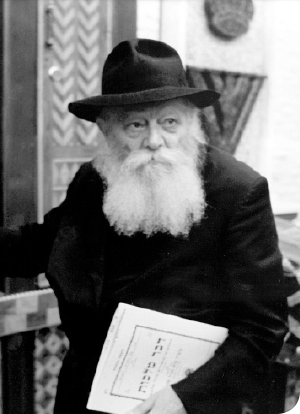MENACHEM MENDEL IS HIS NAME
From Chapter Six of Rabbi Shloma Majeski’s Likkutei Mekoros (Underlined text is the compiler’s emphasis.)
Translated by Boruch Merkur
 10. Since the main service of the baal ha’yahrtzait of Vav Adar pertained to managing the yeshiva, it is understood that on this day his service in the Mishkan and the Mikdash of Yeshivas Tomchei T’mimim is emphasized and perfected. The results of his efforts are plainly seen – and in the actual, literal sense – in the students of the yeshiva, as well as those who they influence, for they bring the avoda into practice in the world.
10. Since the main service of the baal ha’yahrtzait of Vav Adar pertained to managing the yeshiva, it is understood that on this day his service in the Mishkan and the Mikdash of Yeshivas Tomchei T’mimim is emphasized and perfected. The results of his efforts are plainly seen – and in the actual, literal sense – in the students of the yeshiva, as well as those who they influence, for they bring the avoda into practice in the world.
Moreover, since by Divine providence he was appointed (by my revered father in-law, the Rebbe) to oversee the yeshiva, the point of which, as discussed above (regarding the significance of a yeshiva), is alluded to in his name “Shmaryahu ben Menachem Mendel.”
The (majority of the) letters in the name “Shmaryahu” spell the word “neshama” – Shin-Mem-Hei, and the Yud from the name, when placed under the Vav, makes the Nun. The allusion here is to the revelation (and elevation) of the neshama (that takes place on the day of the yahrtzait), especially the revelation of Nishmasa D’Oraisa, the Soul of the Torah (revealed within the Galya D’Oraisa, the revealed part of the Torah), as well as the revelation of “the candle of G-d is the soul of man.”’
Also, regarding the concept of redemption, which comes quicker on account of Yeshivas Tomchei T’mimim, like a Mishkan and Mikdash (M’at), in preparation for the Mikdash of the Future Era: There is the well known concept that if a teaching adds in yiras Shamayim (fear of Heaven), etc., it is permissible and appropriate to “seek out” allusions for it. To that end, consider the following allusion in the name of the baal ha’yahrtzait. The letter Mem in the middle of a word alludes to redemption, as in the verse, “l’marbeh ha’misra – To him who increases the authority” (Yeshaya 9:6), where the closed Mem in the middle of the word (לְםַרְבֵּה) is connected with the redemption. (This is not the case, however, with an open Mem at the end of the word, as in, “chomos Yerushalayim asher hem pruztim – the walls of Jerusalem, which were breached” (Nechemya 2:13), which alludes to exile.) When an open Mem is in the middle of a word it is also connected with the redemption. However, since the redemption and the closure of the fourth side [of the Mem] still have not taken place, it is still an open Mem.
The above is especially pronounced insofar as the baal ha’yahrtzait’s father’s name is “Menachem Mendel.” The saying of our Sages about the name of Moshiach is well known – that “Menachem is his name [i.e., the name of Moshiach].” Also, “Mendel” is numerically equivalent to “Tzedek” (as is known regarding the name of the Rebbe “the Tzemach Tzedek,” which is numerically equivalent to “Menachem Mendel,” for “Tzedek” (as well as “Tzemach”) is the name of Moshiach.*
And “Ben (son of) Menachem Mendel” alludes also to the interpretation of the word “ben” as in “ben chorin – a free man” (not “ben – son of” but one) whose status and being, his metzius, is “free.”
The point here is that the baal ha’yahrtzait’s involvement with the students of Tomchei T’mimim, who learn Nigla and Chassidus, and spread the wellsprings of Chassidus outward, brings about “asi Mar,” the advent of Malka Meshicha.
NOTES:
*”Tzemach” – “Ish Tzemach shmo – a man, whose name is Tzemach” (liturgy of Hoshaanas on Hoshana Rabba); “Tzedek” – “V’haya tzedek azur b’masnav – righteous shall be girded upon his loins” (Yeshaya 11:5).
(From the address of Shabbos Parshas Truma, Vav Adar, 5750; Hisvaaduyos 5750, pg. 337)
 April 12, 2016
April 12, 2016
Reader Comments